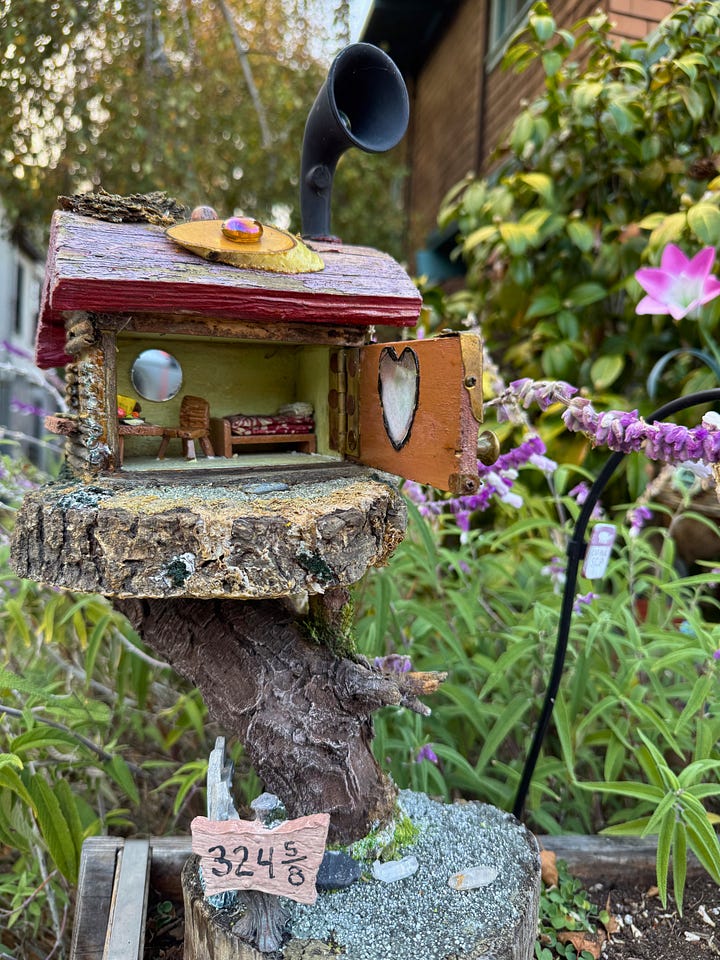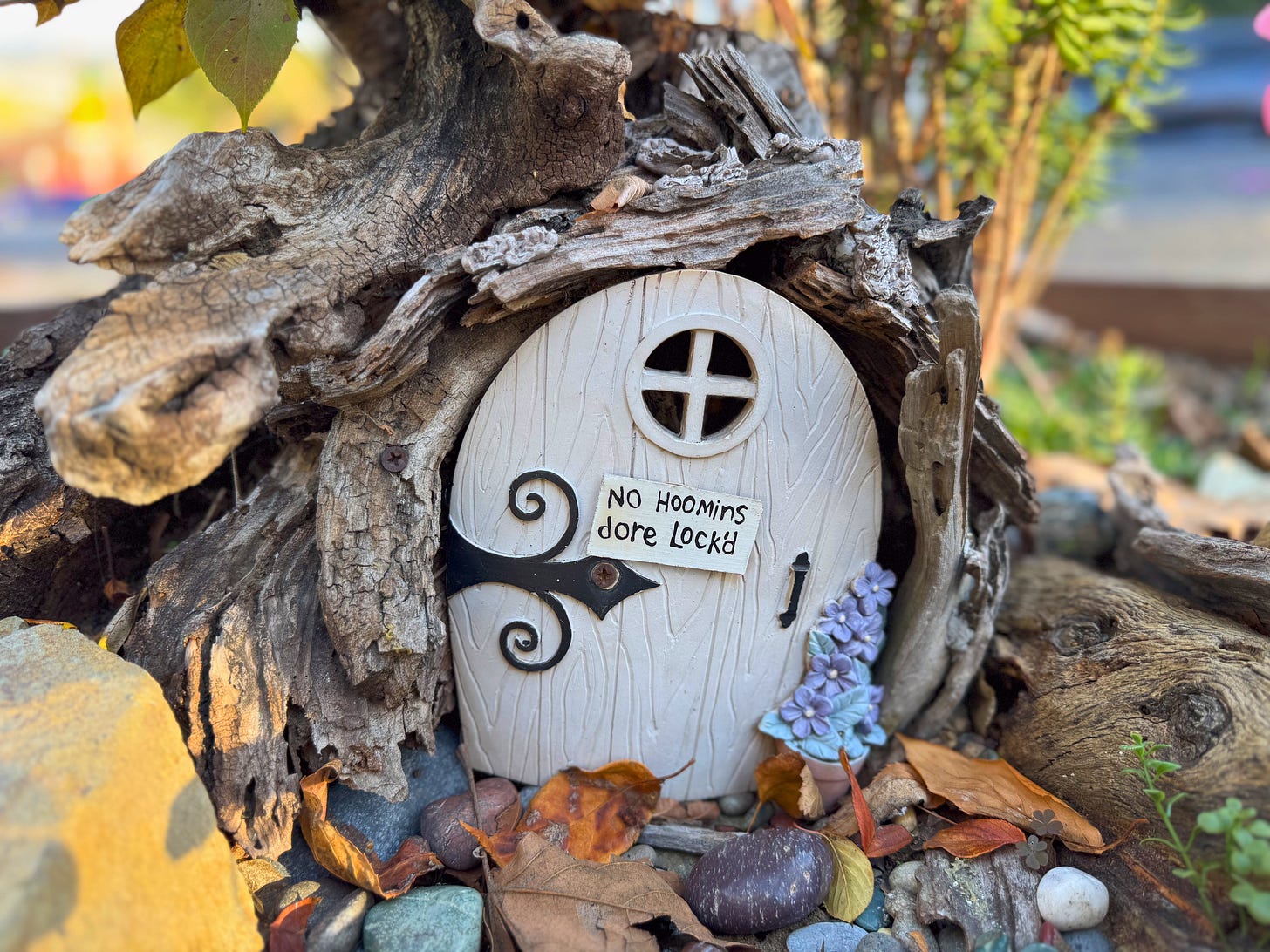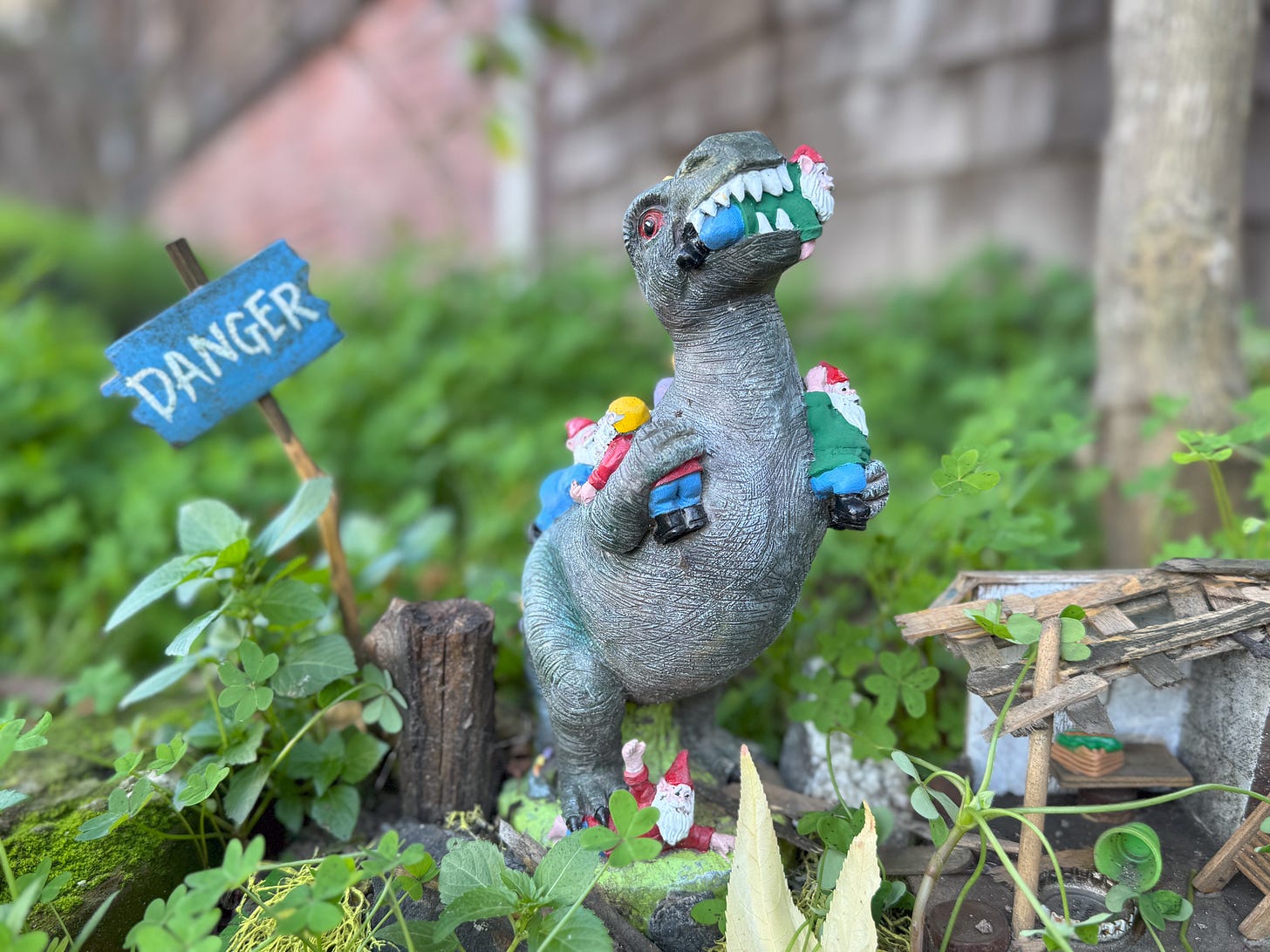No Elves Here, but Plenty of Magic
Who's behind the charming (and growing!) collection of intricately handcrafted fairy houses that suddenly began to appear along this quiet, suburban street? Our audio producer decided to find out...
No Elves Here, but Plenty of Magic
Story and photography by , Senior Audio Producer
Somewhere in a hilly California town, about 13 miles north of Oakland, a secretive creator toils away in a lamplit workshop until the wee hours of the night, crafting miniature, magical worlds for fairy folk. And it’s not a Christmas elf…
At least, that’s how I imagine it happens as I walk up Washington Avenue in the quiet, artsy suburb of Point Richmond, where about three dozen foot-tall “fairy houses” are attached to city-owned trees and terraced property lines along three blocks. A skilled artisan, or perhaps a team of them, has undoubtedly spent hours tinkering with —and weeks designing and pondering—each of these doll-sized installations. An exact count seems impossible. While some are conspicuous, finding others can feel like an Easter egg hunt. And according to neighbors, new creations spontaneously pop up like mushrooms after a good rain.
“They just kind of appear,” said a neighbor named Harrison, who was leisurely walking by on his way home. Two new fairy dwellings had recently popped up in front of his apartment building, he said, but he had no idea who’d put them there.
“I’ve been trying to figure that out,” says Harrison. “It’s a little bit of a mystery to me.”
The diminutive village, known as “Little Point Richmond,” has been attracting visitors since at least 2019. It has earned its own Google map destination, and offers its wee, unseen residents many of the amenities their human neighbors enjoy: a library with Lilliputian books to peruse, a schoolhouse, a fire station, and even a little “stone henge.” One home has a three-bin garbage set (including municipal compost) and a thumbnail-sized Amazon package waiting out front. The fairies’ house numbers correspond to those of adjacent, full-size human homes, with an additional fraction—e.g., “324 ⅓ Washington Ave.”
None of the enchanted dwellings are the same. Dried gourds, driftwood, and sawed-off wicker baskets are used for structures, while many of the decorative accents could have been gathered at local garage sales or purchased at dollhouse supply stores. It’s easy to see why creative types like to visit with their toddlers in tow. Grownups can lose themselves in the whimsical and often humorous creations, while kiddos have plenty to play with: a small-scale windmill, wind chimes, a wish-making station, a spiral slide for glass marbles. I laughed out loud at some of the details made for fairy-folk: Someone had served them a one-inch salmon dinner, and stocked their grocery store with bottles of “love” and “joy.”


During my first visit to Little Point Richmond a few months ago, I’d guessed it to be the collaborative effort of a group of neighbors, perhaps begun during the doldrums of Covid lockdowns. But when I returned recently, Kim Butt, who lives nearby, confirmed that Little Point Richmond is the brainchild of Washington Ave resident and well-known comic book artist Jimmie Robinson.
“He’s a really neat guy,” says Butt, who knows Jimmie and has enjoyed his fairy installations around the neighborhood for years. The designs aren’t coordinated with the neighbors, she tells me, but can be inspired by them.
“It’s a surprise,” she says, about homeowners finding new creations in their yards. “You’ll come out and get a fairy house.”


After learning that the creator is an illustrator, I began to notice the comic book themes: a Godzilla figurine chomping on a garden gnome; the familiar font on the tiny signs; the occasional Studio Ghibli character. I had so many questions for Jimmie. What inspires him to put his sketchpad down and create in the three-dimensional world? Why fairies? How does he come up with the designs? And why does he continue, as Butt put it, to give these “little gifts to the community” year after year?
I tried to reach him—through Instagram, Facebook, and even one of his publishers. I never heard back, but perhaps it doesn’t matter. I hear he’s as private as the fairies, and for now, his work speaks volumes.
ICYMI...
Interested in thoughtful, sustainable giving this holiday season? We have a few suggestions! Check out our mini Holiday Gift Guide, only on Substack.
Write for Craftsmanship!
We’re planning a new series of short articles for 2025, and we’ll be accepting pitches very soon. Get all the details by joining our live Substack Chat on Monday, December 16, 3-4 p.m. PST. If you’re already subscribed to our channel, you can navigate to the chat via this link (please note, however, that the page will be empty until we launch the live chat).
Craftsmanship Magazine focuses on master artisans and innovators whose work informs our quest: to create a world built to last. In addition to our Substack offerings, you’ll find a rich archive of stories, podcasts, photo essays, and documentary shorts on our free website—along with community resources like our Artisans’ Directory, our guide to U.S.-based craft & folk schools, and much more.











This was a great little adventure and in less than 700 words. Bravo!